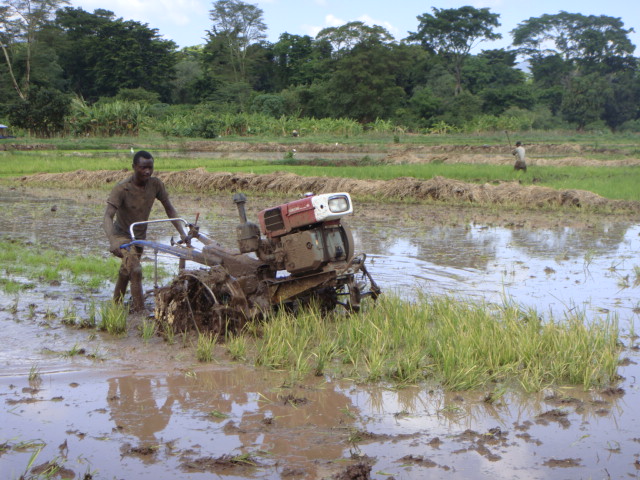三重大学着任以来、ずっと追い続けてきた分離融合型研究が遂に形に!!
植物病理学(ウイルス検出)、作物学(栽培技術調査)、経済学(生産者調査、計量経済分析)の3分野を融合させて、イネ黄斑病の病害クラスター発生と強く関係する栽培技術の特定に成功。三重大、東京農大、JICA、ソコイネ農業大学、キリマンジャロ農業研修所との国際共同研究。成果はAgronomy for Sustainable Development(AGRONOMY-SCIE 版2/91、2020年IF: 5.832、5年IF: 9.354)に掲載されました(https://rdcu.be/cHIJM)。
サブサハラ・アフリカ(サハラ砂漠以南のアフリカ諸国)では都市化や食生活の変化によりコメ消費量が急激に増加しています。しかしコメの生産性は低く、多くのサブサハラ・アフリカ諸国がコメ需要の増加を輸入量の増加でまかなっています。水不足や機械化の遅れなどの問題に加えて、イネ黄斑病がコメの生産性を大きく低下させています。三重大学の研究グループは、タンザニア連合共和国で発生したイネ黄斑病のアウトブレイクを調査し、病害クラスターの発生と強く関係する栽培技術の特定に成功しました。従来、イネ黄斑病に対して有効な手立てがありませんでしたが、本研究により栽培技術を改良することでアブサハラ・アフリカの稲作において低コストかつ持続的に病害を防除できる可能性がでてきました。
For A Sustainable Food Production in Africa -Tackling rice yellow mottle virus disease outbreaks-
Rice consumption in Sub-Saharan Africa is greatly increasing due to urbanization and changes in consumer preferences from traditional staples to rice. In most Sub-Saharan African countries, however, productivity of rice is still low and the increasing demand for rice is met by importing rice from the international market. In addition to water scarcity and poor mechanization, rice yellow mottle virus (RYMV) disease is regarded as a major constraint that causes the low productivity of rice in Sub-Saharan Africa.
The mechanism of RYMV transmission at the plant community level has been well established, with epidemiological models proposed. The long-distance dispersal model from its origin in East Africa to West Africa has been also well established phylogeographically. However, the conditions causing local disease outbreaks, the missing link between the plant community level and continental scale models, remain unclear.
A group of scientists led by Mie University professors (1) investigated a RYMV outbreak in Tanzania. They established spatial autoregressive models (2) based on three different disciplines; plant pathology (virus detection), crop science (field survey), and economics (farmer interviews, econometric analysis) and successfully identified farming practices that are strongly associated with the occurrence of disease clusters.
In agronomic studies, spatial autoregressive models have been successful, but limited to smaller-scale field experiments. This is the first study to upscale the spatial autoregressive model from the experimental field level to the farming community level, by obtaining variables through easy-to-implement techniques such as visual observation and farmer interview.
Previously, there has been no effective measures against rice yellow mottle virus disease. This study has demonstrated that the disease can be prevented by improving farming practices which can be implemented by rice farmers in Sub-Saharan Africa cost-effectively and sustainably. The outcome of this study is expected to contribute to the improvement of rice production and by extension food production in Sub-Saharan Africa.
*1: An international research team formed by Mie University (Professors Nobuhito Sekiya and Toru Nakajima of Graduate School of Bioresources), Japan International Cooperation Agency (JICA, Mr. Nobuaki Oizumi and Mr. Motonori Tomitaka), Tokyo University of Agriculture (Professor Keiko T. Natsuaki), Sokoine University of Agriculture (Mr. Naswiru Tibanyendela), and Kilimanjaro Agricultural Training Centre (Mr. Mchuno Alfred Peter).
*2: A multiple regression model that considers spatial contiguity, where the occurrence of rice yellow mottle virus disease (response variables) is regressed on farmers’ farming practices (explanatory variables) and spatial contiguity (spatial autocorrelation ≈ adjacent rice fields are likely to be infected with rice yellow mottle virus ≈ adjacent rice field are likely to be a cluster of disease infection).

 using WordPress and
using WordPress and
Comments are closed